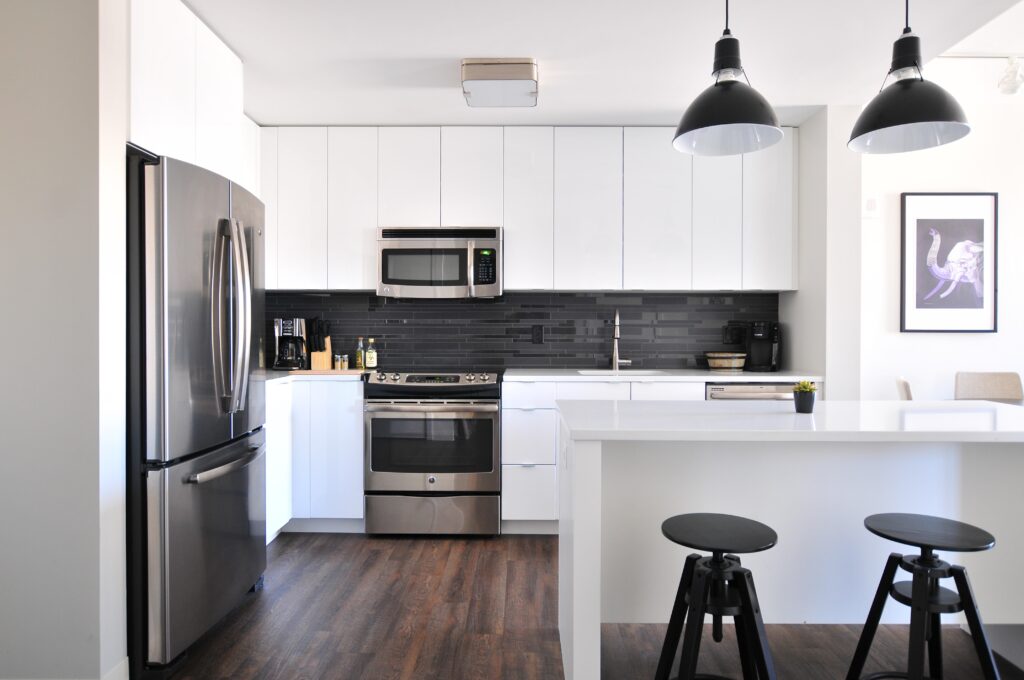Kitchen Designs for a Good Cuisine the best kitchen designs offer easy access to pots and pans, utensils, plates, dinnerware and glassware. This saves time and makes it easier for chefs to find what they need when preparing food.
The design should also leave space for the executive chef to easily walk around to train and supervise restaurant staff. This helps ensure food safety and compliance with health codes.
The Layout
A well-considered kitchen layout is the foundation of a good cuisine. There are a number of different layouts to consider, including the L-shaped kitchen, the horseshoe, and the U-shaped kitchen.

The L-shaped kitchen offers workspace on two walls and room for storage or an island. It’s a great choice for families, as it provides plenty of space for several cooks to work simultaneously.
If you’re in a small space, consider adding a peninsula. It’s an ideal spot for bar stool seating and can help open up the area.
The Appliances
Having the right kitchen tools makes cooking a breeze. There’s now a wide range of appliances aligned to almost every style of cooking, including single burner cooktops, non-stick BBQ grills and even wok burners. Consider what type of cooking style your restaurant offers to determine the best kitchen equipment options for your team.
Keeping items needed for specific tasks close together saves time and energy. For instance, a coffee maker and all related supplies should be close by to serve groggy early-morning staff. Similarly, storing wraps and plastic containers near a workspace keeps them handy for wrapping leftovers.
Make sure you take into account all the important details during kitchen design, from how far apart your different food preparation areas should be to the minimum clearances needed for cabinet and appliance doors. Remembering these details will help ensure your restaurant’s kitchen designs meet the health and safety codes.
The Countertops
Kitchen countertops are one of the most heavily used surfaces in a home. Whether prepping food, eating or dumping shopping bags they need to be tough and hard-wearing yet stylish and complement a home’s decor.
Keep work-related items within reach, like chopping boards and utensils near the sink or pots and pans in an island layout. This makes it easier to complete tasks, saving time and energy.
While wood, granite and quartz remain popular, new alternatives in slick copper and warm terra-cotta plus unusual edgings are creating fresh looks. A rethink of the countertop area can make the whole room look more cohesive and put-together.
The Flooring
Your kitchen’s flooring has a big job: it has to stand up to a lot of foot traffic and shrug off spills. It also needs to match your kitchen’s aesthetic. Fortunately, there’s a huge variety of styles, finishes, colors and textures to choose from.
Keeping items needed to complete tasks close together helps save time and energy. For example, keep coffee mugs and grounds near the coffee maker to make it easy for your groggy staff to grab a cup of joe in the morning. And, keep wraps and plastic containers nearby to quickly wrap up leftovers.
If you have the space, an island layout is a great option to maximize efficiency. This design allows chefs to work in a central location while still having access to all the equipment they need.
The Lighting
While bright task lighting is a necessity, kitchen designs for a good cuisine should also include mood and accent lights. This means that when you’re finished cooking you can turn down the bright lights and introduce softer accents that are more suitable for a sociable dining space.
The best kitchen designs take advantage of natural light and incorporate reflective surfaces throughout the room. Brass metallic accents glow in the sunlight, and glass cabinet doors bounce the light around the lower areas of a room. In a kitchen with a double height ceiling, low-hanging pendant lights are used to maximize light over the food preparation area.
A bold light fixture can be a design statement in its own right, and oversized lampshades like the ones shown here provide ample lighting for the kitchen table while injecting interest into the space. Pair them with matching wall lights to keep your kitchen-diner scheme cohesive and coordinated.

One thought on “Kitchen Designs for a Good Cuisine”